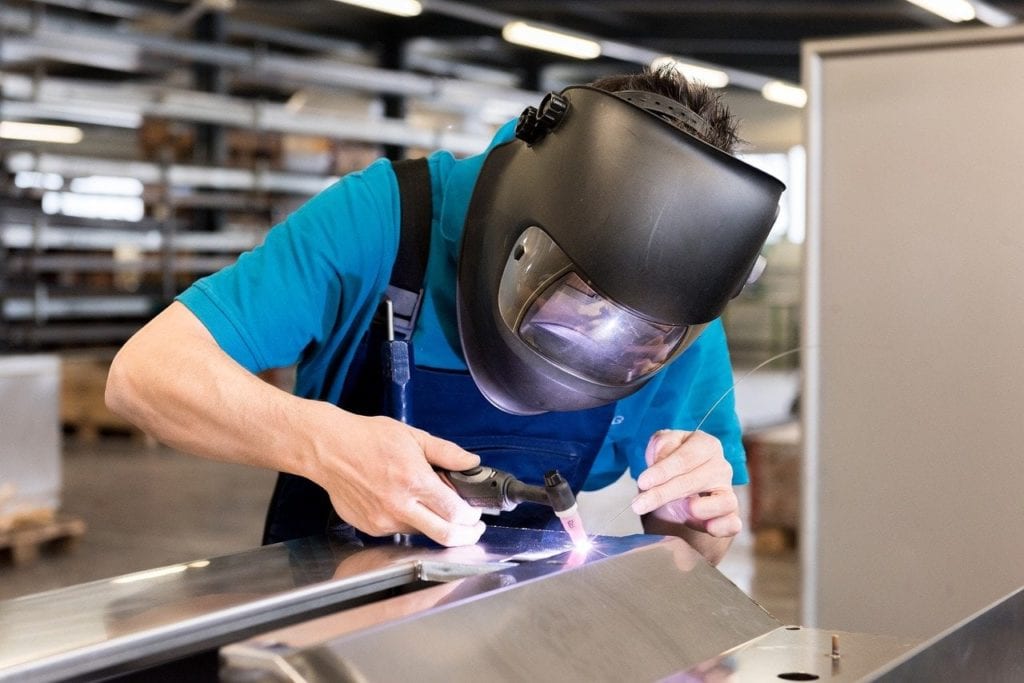Welding 101: How to Stay Safe While Welding
-
Pete Ortiz
- Last updated:

It’s a no-brainer. If you’re doing hot work, you must play it safe, whether it’s smoldering equipment or a welding torch. Consider the price of throwing caution to the wind. According to the National Fire Protection Association (NFPA), welding was the cause of 40% of fires in non-home environments. Hot work accidents caused $484 billion in damages. That’s not even talking about the ultimate costs.
- Burns
- Manganism
- Eye injuries
- Electric shocks
- Fires
- Toxic fumes
Causes of Welding Injuries
Many causes relate to the nature of the work you’re doing. After all, using a tool like a welding torch has risks, starting with fumes. Several things can affect your risk of exposure, such as what you’re doing, the work environment, and the ventilation. There are immediate effects like throat and eye irritation. The so-called Welder’s flash that causes eye injuries is the most common.
However, prolonged exposure can also lead to cancer and other serious health conditions. Arc welding is one of the most dangerous causes of workplace accidents. It can cause severe burns and fires that can lead to widespread damage and potential loss of life. Playing safe isn’t an option when welding. It is a necessity.

Safety First
A thorough understanding of the type of work you’re doing is imperative to comprehend the risks you’re taking when welding. After all, you’re working with metals and electricity with over 100 different ways to do it. That requires education and on-the-job training to learn the ropes. There’s also the environment in which you work, which can also increase the chance of injury. Let’s consider each factor in detail.
The Working Environment
Welding is typically done with hand tools. Sometimes, you may find yourself in confined situations, making proper ventilation critical. Part of this onus rests with your employer. OHSA requires that they provide training for their employees working with welding equipment.
Make sure to apply common sense when working. If you’re working outside, don’t stand directly in the flow of fumes. Just because you’re outdoors doesn’t mean you’re immune to the inhalation risks. If possible, opt for a lower fume-generating material. Consider the qualities you need to create a safer working environment for the job.
Welding is physically demanding. It requires stamina and manual dexterity. It may involve repetitive movements and long periods of standing that can take a toll on your endurance. It often means moving heavy materials that carry another set of health risks. That’s why it’s essential to know your limitations when working with this type of equipment.
Equally important is knowing the technical aspects of the project before you start. Coursework in blueprint reading, physics, and metallurgy can provide the necessary background to help you make wiser decisions on the job. It all boils down to the technical skills you must play it safe. Inspecting the area around your work area before you start welding is a vital first step.

Gear
The two greatest hazards you face when welding are the arc’s intense light and the hot materials you work with. The gear, or Personal Protective Equipment (PPE), you must wear will help safeguard you from both. They include:
- Long pants without cuffs
- Long-sleeved shirts
- Safety goggles with side shields
- Heat-resistant gloves
- Welding masks with ANSI Z87.1 compliance
- Ear protection
- Welding apron
- Shoes with ASTM F2412 and ASTM F2413 compliance
None of these things are optional.
Some individuals wear a fire-resistant welder’s cap to keep sweat from interfering with their vision and protect their hair, which you may also find helpful. It’s also imperative to remove any jewelry that may conduct electricity. The same precaution applies to your clothing. If it gets wet, change them to prevent shocks. Remember that any exposed part of your body is at risk of a burn from flying debris or sparks.
Noise is another on-the-job hazard that can have long-term consequences with hearing loss if just from the on-site generators. That’s especially true if you’re working in a confined space. Wearing earplugs or muffs can reduce your risk of injury.
Training and Certification
Most employers don’t require certification. Experience often fills that role. However, it’s worth pursuing to learn the latest in safety innovations that you can bring to the job. Professional organizations, such as the American Welding Society, offer programs to earn these credentials. That will give you valuable knowledge about the risks and ways to prevent accidents.
- Related read: How to Clean a Welding Helmet Lens
 Conclusion
Conclusion
Welding doesn’t have to be hazardous work if you take the necessary precautions before you start. It’s all about protecting you and the area around you. It also involves respecting the nature of the things you are working with. That requires concentration and a keen focus on what you’re doing at all times. Accidents happen. However, you can take steps to remove the most common and preventable causes.
- You might also be interested in: MIG vs. TIG Welding: What’s The Difference?
Featured Image Credit: Pixabay
Contents



